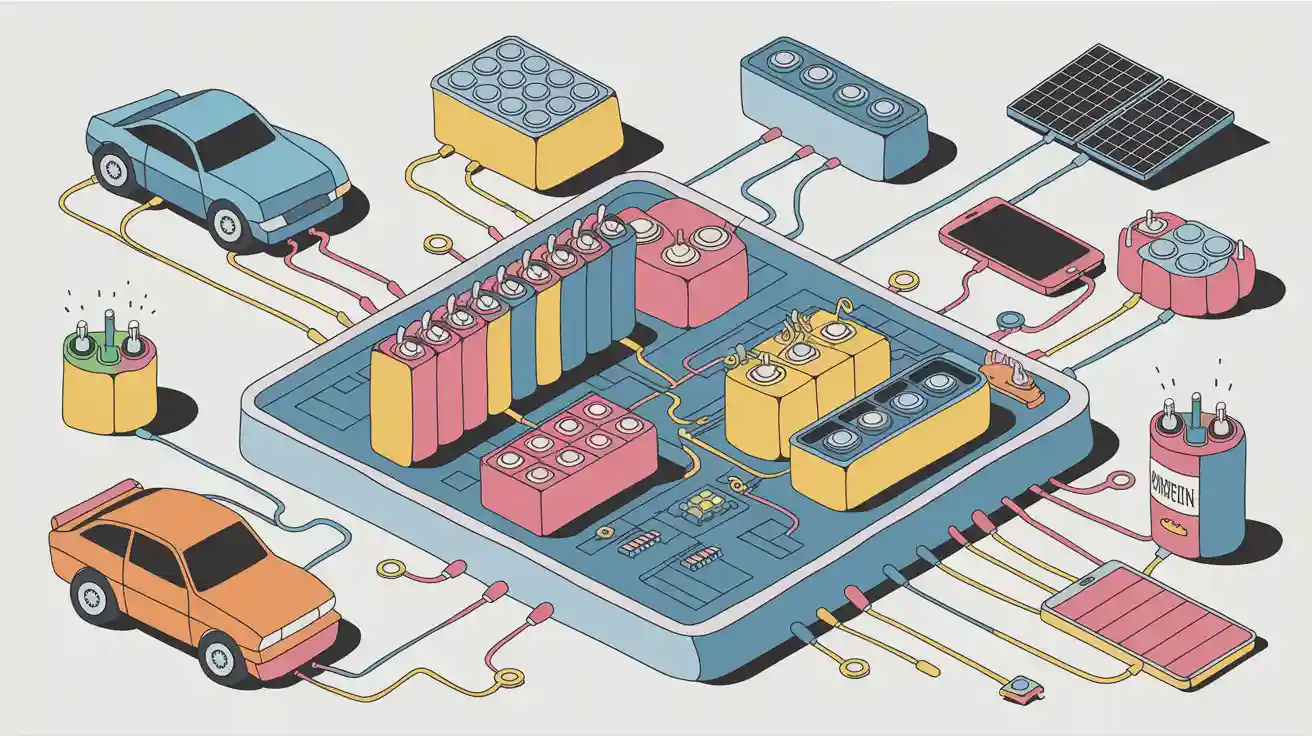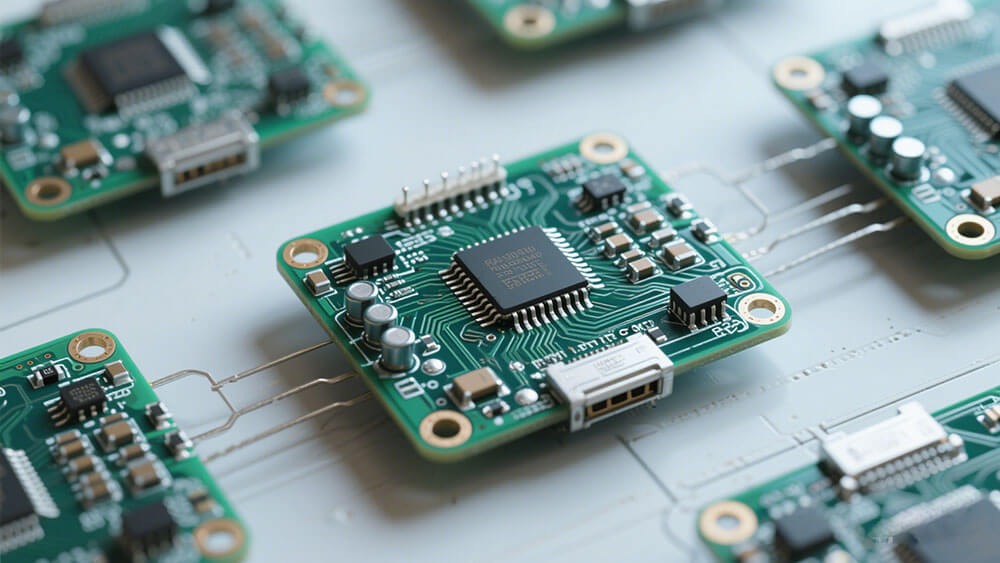
Battery protection circuits play a crucial role in maintaining the safety, performance, and lifespan of your battery. These circuits shield batteries from overcharging, over-discharging, and overheating, ensuring optimal functionality. Different battery chemistries present unique challenges, such as thermal instability or voltage imbalances. By addressing these issues, battery protection circuits enhance reliability and prevent potential hazards.
Key Takeaways
Battery protection circuits are very important for safety. They stop batteries from overcharging, over-discharging, or getting too hot, which can harm them or cause danger.
Different types of batteries need special protection circuits. For example, lithium-ion batteries need better heat control, while lead-acid batteries need to avoid overcharging.
The right protection circuit helps batteries last longer and work better. Custom circuits make devices like electronics, medical tools, and energy systems more reliable.

Part 1: Why Battery Protection Circuits Are Essential
1.1 Overcharge and Over-discharge Protection
Overcharging and over-discharging are two critical factors that can degrade a battery’s performance and lifespan. When a lithium-ion is overcharged beyond 4.2 volts, it risks overheating, which can lead to thermal runaway. On the other hand, discharging below 2.5 volts stresses the cell, causing irreversible damage to its structure. A battery protection circuit prevents these scenarios by cutting off the circuit when the voltage approaches unsafe levels. This mechanism not only extends the battery’s life but also ensures safety by mitigating risks of overheating or fire. For instance, studies on lithium-ion batteries have shown that without proper protection, thermal runaway can release toxic gases and even cause explosions.
1.2 Short Circuit and Overcurrent Safeguards
A short circuit or excessive current flow can severely damage a battery and pose safety hazards. Protection circuits act as a safeguard by detecting abnormal current levels and disconnecting the battery from the load. This feature is especially crucial in lithium-ion batteries, which are sensitive to sudden current surges. By preventing internal damage, the circuit ensures the battery remains functional and safe for use. In medical devices, for example, failures in lithium-ion cells have been linked to electrical arcing and thermal runaway. These incidents highlight the importance of robust short circuit protection in critical applications.
1.3 Thermal Management for Safety and Efficiency
Effective thermal management is essential for maintaining the safety and efficiency of energy storage systems. Batteries generate heat during charging and discharging, and without proper control, this heat can degrade performance or trigger safety risks. Advanced thermal management strategies, such as liquid cooling or phase change materials, help regulate temperature and prevent overheating. This not only extends the battery’s lifespan but also enhances its overall efficiency. For li-ion batteries, thermal management systems are particularly vital, as they reduce the likelihood of thermal runaway and ensure stable operation under varying conditions.
1.4 Reverse Polarity and Voltage Balancing in Battery Packs
In battery packs, reverse polarity and voltage imbalances can compromise the system’s integrity. A protection circuit prevents stronger cells from forcing weaker ones into reverse polarity, which could damage the entire pack. Voltage balancing ensures that all cells charge evenly, avoiding overcharging or undercharging. This balancing act is crucial for maximizing the performance and longevity of the battery pack. For instance, in energy storage systems, equalizers maintain consistent charge levels across cells, enhancing both safety and efficiency. By incorporating these features, the battery management system ensures reliable operation and protects against potential failures.

Part 2: Comparison of Battery Protection Circuits by Chemistry
2.1 Lead Acid Battery Protection Circuit Features
Lead acid batteries are among the oldest rechargeable batteries, widely used in automotive and industrial applications. Their protection circuits focus on preventing overcharging and deep discharging, which can significantly reduce battery lifespan. Overcharging leads to water loss in the electrolyte, while deep discharging causes sulfation on the plates, both of which degrade performance.
Protection circuits for lead acid batteries typically include voltage regulators to maintain optimal charge levels. They also incorporate thermal sensors to monitor temperature changes, ensuring safety during operation. These circuits are relatively simple due to the robust nature of lead acid cells, making them cost-effective for large-scale applications like uninterruptible power supplies (UPS) and forklifts.
2.2 NiCd Battery Protection Circuit Mechanisms
Nickel-cadmium (NiCd) batteries are known for their durability and ability to deliver high discharge rates. However, they face safety concerns related to overcharging and memory effect. Protection circuits for NiCd batteries address these issues by including timers and voltage cut-off mechanisms to prevent overcharging. They also feature current limiters to avoid excessive draining during high-demand applications.
NiCd protection circuits are designed to handle the battery’s high discharge rates, making them suitable for power tools and emergency lighting systems. Despite their reliability, environmental concerns over cadmium toxicity have limited their use in recent years.
2.3 NiMH Battery Protection Circuit Design
Nickel-metal hydride (NiMH) batteries offer higher energy density than NiCd batteries, making them a popular choice for consumer electronics. Their protection circuits focus on preventing overcharging and overheating, which can compromise safety and reduce battery performance. These circuits often include temperature sensors and voltage monitoring systems to ensure stable operation.
Voltage balancing is another critical feature in NiMH battery packs, as it prevents individual cells from overcharging or undercharging. This design enhances the lifespan of the pack, making NiMH batteries ideal for hybrid vehicles and portable devices.
2.4 Li-ion Battery Protection Circuits: NCM, LFP, LCO, and LTO Variants
Lithium-ion batteries dominate modern applications due to their high energy density and versatility. However, they require advanced lithium battery protection circuits to address safety concerns like thermal runaway and voltage imbalances. Each lithium-ion variant—NCM, LFP, LCO, and LTO—has unique protection requirements.
NCM (Nickel Cobalt Manganese): These batteries offer high energy density but require precise voltage and temperature control. Protection circuits include multi-level thermal sensors and active balancing systems, making them suitable for electric vehicles.
LFP (Lithium Iron Phosphate): Known for thermal stability, LFP batteries have simpler protection circuits. They focus on over-discharge prevention and are widely used in energy storage systems.
LCO (Lithium Cobalt Oxide): Common in consumer electronics, LCO batteries need compact protection circuits with rapid response to overcurrent and overheating.
LTO (Lithium Titanate): These batteries excel in extreme temperatures. Their protection circuits are designed for low-voltage thresholds, making them ideal for grid storage and cold-weather applications.
By tailoring protection circuits to each chemistry, you can optimize battery performance and ensure safety in diverse applications.

Part 3: Applications of Batteries and Their Protection Circuits
3.1 Industrial Applications: UPS Systems, Forklifts, and Heavy Machinery
In industrial settings, batteries power critical systems like uninterruptible power supplies (UPS), forklifts, and heavy machinery. These applications demand high reliability and efficiency, making battery protection circuits indispensable. For instance, reverse battery protection prevents damage caused by incorrect polarity during installation, while overcurrent safeguards protect against electrical shorts that could disrupt operations.
LiFePO4 batteries are increasingly replacing lead-acid batteries in these applications due to their superior performance. They offer a cycle life of 3,500 cycles at 80% depth of discharge (DoD), compared to just 800 cycles for lead-acid batteries. Their higher energy density (270 Wh/L vs. 80 Wh/L) and 98% charge efficiency reduce downtime and maintenance costs. Over a decade, LiFePO4 batteries can save up to 60% in operational expenses, despite their higher initial cost. This makes them ideal for telecom towers and other high-reliability applications, where eliminating monthly maintenance can save $18,000 per site.
3.2 Consumer Electronics: Smartphones, Laptops, and Wearables
Consumer electronics rely heavily on li-ion batteries for their compact size and high energy density. Devices like smartphones, laptops, and wearables require premium performance battery packs that deliver consistent power. Protection circuits in these batteries ensure safety by preventing overcharging, overheating, and reverse polarity issues.
Reverse battery protection using diode technology is a common feature in these circuits. It prevents damage from incorrect battery insertion, enhancing device longevity. Voltage balancing within the pack ensures all cells operate efficiently, maximizing performance. These features are crucial for maintaining battery safety in devices that users depend on daily.
3.3 Energy Storage Systems (ESS)
Energy storage systems (ESS) play a vital role in renewable energy integration and grid stability. Li-ion batteries, particularly LFP variants, dominate this sector due to their thermal stability and long cycle life. Protection circuits in ESS manage voltage balancing across cells, preventing overcharging and undercharging.
Reverse battery protection is critical in large-scale ESS installations to avoid costly damage from incorrect connections. Advanced thermal management systems within the pack ensure optimal performance, even under high load conditions. These features make ESS a cornerstone of sustainable energy solutions. Learn more about sustainability in battery technology here.
3.4 Medical Devices and Critical Equipment
Medical devices demand the highest standards of reliability and safety. Battery protection circuits in these devices prevent overvoltage, overcurrent, and electrostatic discharge, which could compromise patient safety. Designers must integrate these circuits early in the development process to ensure device reliability.
Protection devices like resettable PTC thermistors safeguard against overload currents, while reverse battery protection prevents damage from incorrect installation. These features are essential for maintaining the integrity of critical equipment, ensuring uninterrupted operation and the security of patient data. For devices with communication capabilities, comprehensive circuit protection mitigates risks from electrical threats throughout their lifecycle.
Choosing the right battery protection circuit is essential for optimizing performance and ensuring safety. Each battery chemistry has unique requirements, and tailored circuits address these needs effectively. By enhancing efficiency and extending lifespan, these circuits contribute to reliable energy solutions. Advanced protection technologies also drive innovation, shaping the future of battery applications.
FAQ
What is the primary purpose of a battery protection circuit?
A battery protection circuit ensures safety by preventing overcharging, over-discharging, and overheating. It also enhances performance and extends the lifespan of batteries in various applications.
How do protection circuits differ across battery chemistries?
Protection circuits vary based on chemistry-specific needs. For example, Li-ion circuits focus on thermal management, while lead-acid circuits prioritize overcharge and deep discharge prevention.
Can you use one protection circuit for all battery types?
No, each battery chemistry requires tailored protection circuits. Custom designs address unique voltage, temperature, and safety requirements, ensuring optimal performance and reliability.






